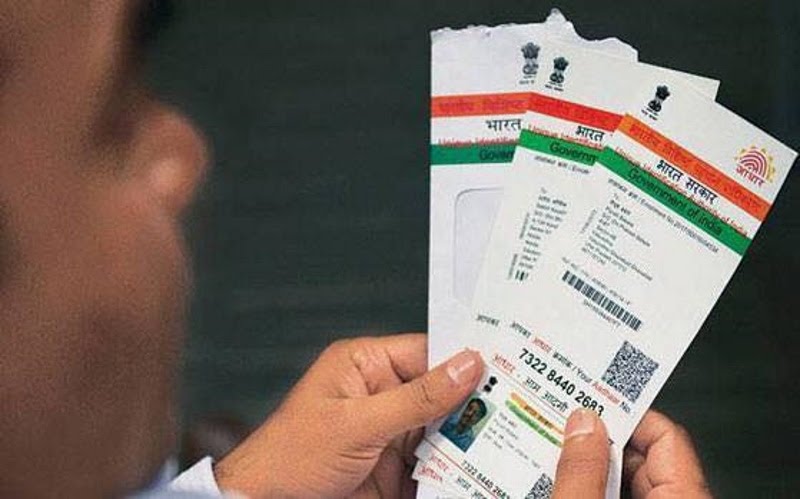Making Aadhaar mandatory: Benefits and drawbacks
Making Aadhaar mandatory: Benefits and drawbacks
In February, various ministries of the federal government announced in February that for people to avail government benefits and subsidies, they would be required to hold an Aadhaar card (and Unique ID). The subsidies affected by these announcements include food grain and horticultural subsidies, crop insurance schemes and benefits offered under Federal government programs such as the National Rural Livelihood Mission and National Career Services. And on Thursday, the Lok Sabha also passed the Finance Bill of 2017, which makes holding and using one’s Aadhaar card mandatory for the filing of income tax returns as well as obtaining and keeping a PAN card.
The various issued notifications allow for a period of time until which beneficiaries can apply for the Aadhaar card before not being allowed their subsidies and benefits. In the interim, in the absence of an Aadhaar card, beneficiaries can use their application slip for an Aadhaar card or continue using other identification documents to avail their subsidies. The duration until which beneficiaries can wait before mandatorily requiring an Aadhaar card differs from scheme to scheme. All of these notifications have been issued in accordance with the Aadhaar (Targeted Delivery of Financial and other Subsidies, benefits and services) Act of 2016.
The biggest impact will be on people who rely on food subsidies. To be more specific, any government benefits or subsidies related to food grains under the National Food Security Act of 2013 will now require the beneficiary to hold an Aadhaar card. An estimated 67 percent of India’s population relies on the food subsidies and benefits available for cereals due to the National Food Security Act of 2013.
One major point of contention over these decisions is that the passage of these ministry notifications contradicts the Supreme Court’s ruling in 2015 on Aadhaar. The Supreme Court reaffirmed an earlier ruling from 2013, stating that Aadhaar can only be a voluntary decision of the individual and that as long as a person is eligible to avail benefits and subsidies, the government cannot deny them those benefits and subsidies because on the basis that they do not have an Aadhaar card. Despite this ruling, the federal government decided to push through with these moves.
Furthermore, the manner in which the Aadhaar Act was passed through the Parliament was contentious as well. The Aadhaar Bill would be introduced as a money bill in the Lok Sabha. Classifying it as a money bill meant that the Rajya Sabha would not be able to vote on it, merely make suggestions and that passage through the Lok Sabha itself would turn the bill into an Act. There was an outcry over classifying the bill as a money bill and the matter was taken to the Supreme Court, which is currently still holding hearings over the matter.
This is also not something new. The federal government has also previously pushed for the same moves numerous times after the Supreme Court ruling. For instance, making holding an Aadhaar card to avail the cooking gas subsidy being mandatory. Furthermore, the federal government has also been pushing bank accounts to be linked to Aadhaar cards, regardless of whether or not an individual takes government benefits or subsidies.
The main argument that the federal government, and indeed, the reason why the previous UPA government kick-started the Aadhaar system, was to facilitate direct and transparent delivery of benefits and subsidies to the Indian citizens that required them. The system of payments making their way to people’s bank accounts directly was pursued with the goal of preventing fraud and corruption that otherwise took place and the World Bank too has praised the Aadhaar system for this reason.
According to The Economist, Nandan Nilekani, the creator of the Aadhaar system, argues that trust and verifiability are important for any business. Hence, the Aadhaar system’s positives will not only be limited to the government but spread to the private business sector too as with an Aadhaar backed identity, banks will be more confident in giving out loans and businesses, both big and small more secure in knowing who they’re working with.
In fact, given the size of India’s population, something like the Aadhaar system might seem like easiest and most effective way to organize the payments of subsidies and benefits while keeping a check on administrative costs as well.
However, it is the sheer size of the Aadhaar database wherein its issues lie as well. For starters, at least for now, the Aadhaar system doesn’t have the strongest track records when it comes to the deliverance of subsidies and benefits. For instance, according to a report in the Economic and Political Weekly based on data made released by the Unique Identification Authority of India (UIDAI) itself, the probability of the identities of two different people matching was 1/112 for India’s 1.3 billion population.
Furthermore, a survey conducted by Andhra Pradesh’s government itself saw 48 percent respondents citing Aadhaar issues as a reason for them missing out on subsidies and benefits. Yet, the government wants to force through Aadhaar cards for every Indian citizen.
The other issue with binding so much information of a citizen, including their bank accounts, to their Aadhaar card is if another country were to hack to Aadhaar database. India deals with frequent cyber attacks from China and Pakistan. Hacking the Aadhaar database would be an easy way for other countries to create disruption within India. Even Google and Apple have been wary of taking to Aadhaar due to security concerns.
Furthermore, there is the question of whether or not the government’s bureaucracy is equipped to handle something like the Aadhaar database and this is pertinent as the incapability to do so will only make it easier for hackers to target the Aadhaar system. Just recently, internet users reported how easy it was to access Aadhaar card information from government websites, by simply running a google search. Examples like that would suggest that the forcing through of Aadhaar indicates that the bureaucracy is not well equipped to handle the Aadhaar system currently.
This example also demonstrates the folly in the government making the Aadhaar system mandatory for a wide range of things, as in case of identity theft related to Aadhaar. A person reliant on Aadhaar for their benefits or subsidies, and, if permitted, having their bank account linked with the Aadhaar system, would be left toothless to carry out daily activities until the matter was sorted out.


 September 23rd, 2021
September 23rd, 2021



As I’m unable to add image to this post, I will try to show you the image in text from…